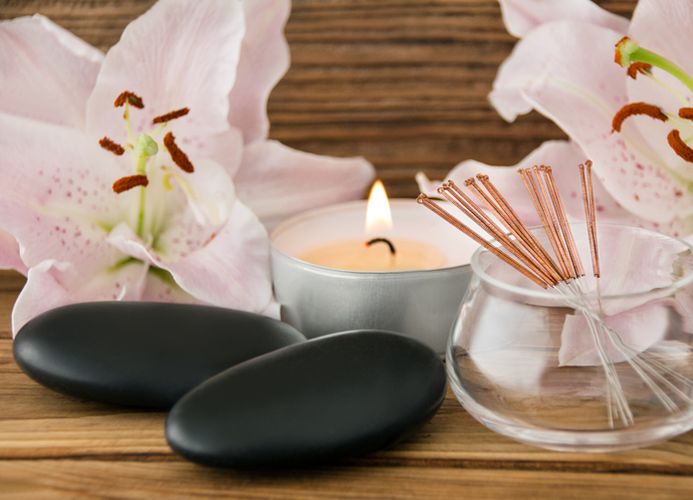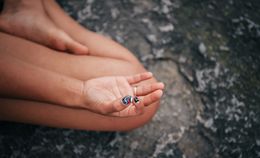We've known about the many health benefits of acupuncture for millennia. Traditional Chinese medicine healers mastered the practice of inserting thin needles into the body to treat muscle pain and perform physical therapy as early as 2600 BCE1
More recently, contemporary dry needling (DN) has splintered from the traditional practice of acupuncture. A modern spin on ancient medicine, dry needling alleviates pains and aches throughout the body using hypodermic needles.
Below, we'll outline the differences between acupuncture and dry needling. We'll also sort through the debate over which method is superior for fighting disease, restoring wellness, and soothing bodily aches and pains.
Philosophical Differences
Acupuncture and dry needling both make use of small needles to target "trigger points" that form knots in the body's muscle groups. Practitioners of acupuncture and DN will locate these trigger points and work through them to disrupt the pinched nerves, impinged muscle fibers, and damaged tissue that is causing pain.
Traditional Chinese acupuncture incorporates ancient Eastern concepts such as "qi" (pronounced "chee") and meridians. The word "qi" translates to "air", but it is commonly known as a type of "energy flow" that circulates throughout the body and provides vitality to the mind. Muscle knots, according to acupuncturists, block the flow of qi.
Dry needling practitioners take a similar approach to acupuncturists, inserting thin needles into the skin as part of a treatment regimen. But dry needling practitioners deviate from the belief that spiritual energy blocks are causing ailments. Instead, DN therapists have a western, materialistic view of the practice complete with medical terminology of its own.
Dry Needling 101
Typically, dry needling involves the insertion of a thin needle in knotted muscle tissue for between 15 and 30 minutes. Some practitioners of dry needling practice the so-called "in and out" technique where the needle is removed immediately after insertion.
Another common practice of dry needling is the non-trigger point technique. This alternative method involves the insertion of needles into the tissue surrounding the trigger point, and not the knot itself. Today, non-trigger needling is practiced less widely than conventional trigger point needling to treat acute and chronic pain.
More advanced forms of therapy include TMJ dry needling, IMS dry needling, and fibromyalgia dry needling. Each of these is used to treat specific kinds of pain and restore function to particular areas of the body. The spinal cord and neuroma plantar are a pair of examples.
Benefits of Dry Needling
Practitioners of dry needling claim that there are numerous benefits to the practice. Below, we've listed some of the most commonly cited benefits of dry needling:
Improved flexibility
Greater lower back mobility and range of movement
Localized pain relief (e.g., wrist pain)
Migraine and headache relief
Knee pain alleviation
Rotator cuff and temporomandibular joint mobility (TMJ dysfunction)
The benefits of dry needling are not all hearsay. A 2013 systematic review2 found that dry needling was more effective than placebo in decreasing pain after four weeks of treatment. For this reason, medical professionals often recommend dry needle therapies for treating damaged connective tissue, weak muscles, musculoskeletal disorders, and myofascial trigger pain.
Benefits of Acupuncture
The benefits of acupuncture mirror those of dry needling. However, some of the health and analgesic benefits are more particular or ailment-specific than DN alone. For instance, some benefits of acupuncture3 include:
Dental pain alleviation and muscle relaxation
Labor and pregnancy-related pain
Osteoarthritis relief
Relief from chemotherapy-induced nausea
Low-back pain alleviation
Heel pain and tennis elbow relief
Headaches migraines relief
These benefits occur through a process of needle insertion, manipulation (moving and twirling of acupuncture needles in the body) and, finally, removal. After the acupuncture treatment, most patients feel an immediate sense of relief, focused energy, and relaxation.
The Bottom Line
Both dry needling and acupuncture have their own benefits, and either may be right for you depending on your personal beliefs and preferences.
No matter which therapy you choose to treat your muscle pain, you are bound to find some degree of success if you stick with a long-term treatment regimen. Before booking an assessment or initial appointment, take the time to research therapists in your area and exercise scrutiny when selecting the practitioner for you.
References:
1. https://www.ncbi.nlm.nih.gov/pmc/articles/PMC2287209/
2. https://www.jospt.org/doi/full/10.2519/jospt.2013.4668
3. https://coc.unm.edu/common/training/acupuncture_Dr%20%20Lee1.pdf





















